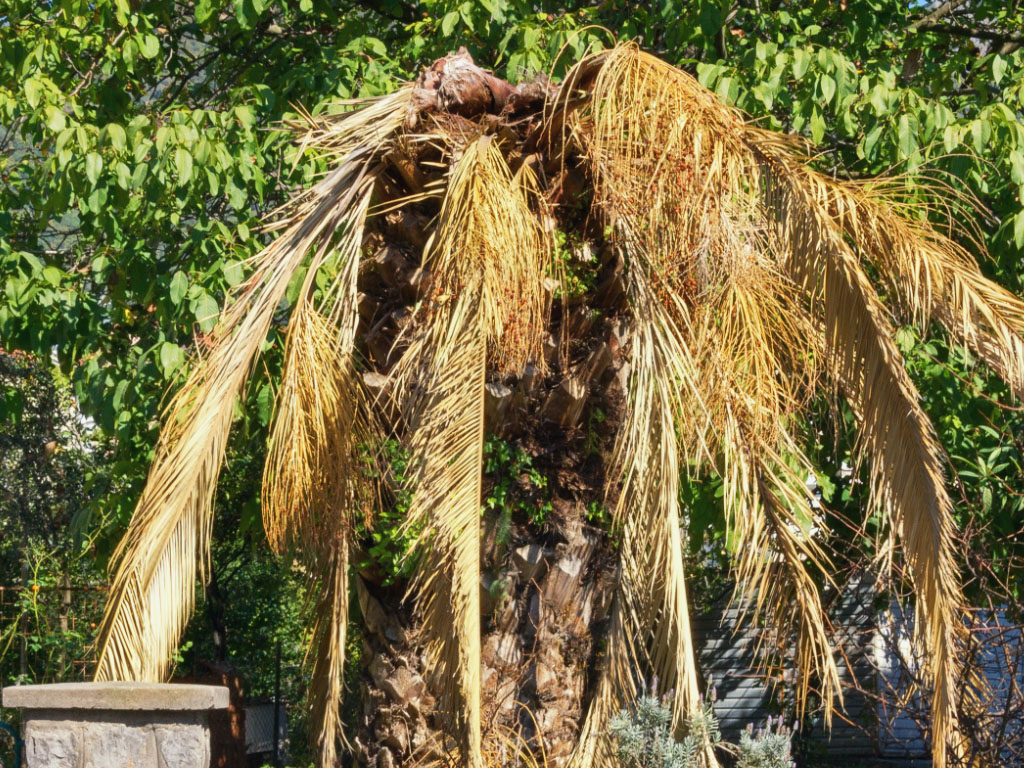
In Sarasota and its surrounding Suncoast islands, homeowners are blessed with a climate that allows them to cultivate a diverse range of palm trees. If you’ve ever dreamt of giving your property a tropical ambiance, planting these ornamental plants is the way to go. Not only are they a symbol of the region’s lush landscapes, but they also stand as a testament to the area’s mild winters, which are conducive to palm growth.
Palm trees have become an iconic feature of Sarasota’s residential landscapes. Their popularity isn’t just due to their aesthetic appeal; it’s also because of their resilience. Even during the colder months, these trees remain unfazed, continuing to thrive and add beauty to homes across the region. When you see them gracefully swaying with the wind, it’s hard not to feel as though you’ve stepped into a slice of paradise right in your backyard.
While these trees are undoubtedly a beautiful addition to any property in Sarasota, they require expert care to maintain their health and vibrancy. That’s where GreenEdge comes in. As a leading tree care company in the region, GreenEdge understands the unique needs of palm trees in Sarasota, FL. Whether you’re looking to plant new palms or ensure the longevity of your existing ones, GreenEdge is your go-to partner for all things palm-related.
Understanding Palm Tree Health: The Yellowing Dilemma
Palm trees, with their signature fronds, are more than just plants; they’re a symbol of tropical serenity that many homeowners cherish. Their towering stature and sun-kissed leaves evoke images of beachside sunsets and warm summer breezes. Beyond their aesthetic appeal, what’s truly remarkable about these trees is their resilience. Throughout the year, come rain or shine, they maintain a lush green hue, a testament to their robust health. This evergreen vibrancy isn’t merely about good genes; it’s a reflection of the consistent care and nourishment they receive, ensuring they remain a radiant centerpiece in gardens and landscapes.
Indicators to Monitor
- Yellowing of Leaves: If you observe a shift from their natural green to a yellowish tint, it’s a clear signal that something might be amiss. Such discoloration could be indicative of potential health issues that warrant attention.
- Natural Aging Process: It’s essential to differentiate between natural aging and signs of distress. As palm trees mature, it’s not uncommon for older leaves, especially those at the base, to turn yellow and eventually fall off. If the majority of the tree retains its green and only the older fronds show yellowing, it’s likely a natural process.
- Extended Dry Periods: If the environment has been particularly dry and you notice a significant number of older leaves turning yellow, it might be time for some maintenance. Trimming these aging fronds can prevent them from turning brown and affecting the tree’s overall appearance.
Potential Causes of Discoloration
If the yellowing persists or is widespread, it’s crucial to consider other underlying causes:
- Nutrient Deficiency: A prolonged lack of essential nutrients in the soil can lead to yellowing. Palms, like all plants, require a balanced diet to thrive.
- Pests or Fungal Infections: Another common reason for discoloration is the presence of pests or fungi. These invaders can compromise the tree’s health and lead to visible signs of distress.
While palm trees are relatively resilient, they aren’t immune to challenges. Regular inspections and timely interventions can ensure they remain a healthy and beautiful addition to any landscape.

Identifying the Cause of Yellowing Palm Trees
In the verdant landscapes of Sarasota, the sight of palm trees with yellowing leaves can be both puzzling and concerning for homeowners. While it’s easy to dismiss this as a mere sign of aging, it often hints at deeper underlying issues. Taking prompt action is essential, and this begins with consulting a professional tree company or a certified arborist. With their extensive expertise and specialized tools, these professionals can delve deep into the root cause, ensuring that your palms get the care they truly deserve.
A predominant factor leading to the yellowing of palm fronds is a deficiency in essential nutrients or minerals. Just like any other plant, palm trees have their unique nutritional requirements. Nitrogen, for instance, is pivotal for their growth and development. A deficiency, which can arise from using an unsuitable fertilizer or due to the soil’s inherent limitations, can affect both young and mature fronds. To navigate these nutritional intricacies and ensure your palms thrive, seeking guidance from a certified arborist becomes indispensable. They not only advise on the right fertilizers but also shed light on other vital minerals that your palm might be craving.
Nutritional or Mineral Deficiencies
One of the primary reasons for yellowing palms is a deficiency in essential nutrients or minerals. Palm trees, like all plants, have specific nutritional needs:
- Nitrogen: Vital for growth and development. A deficiency, often resulting from using the wrong fertilizer or inadequate soil sources, can cause both old and new fronds to yellow. It’s advisable to consult a certified arborist who can guide you in selecting the appropriate fertilizer and advise on its frequency of use based on the soil’s nutritional content.
- Other Essential Minerals: Apart from nitrogen, palm trees require several other minerals to thrive. If your tree is showing signs of distress, an arborist might conduct a soil test to pinpoint what’s missing. Commonly deficient minerals include:
- Potassium
- Iron
- Magnesium
- Manganese
Disease-Related Causes
Trees, like any living organism, are susceptible to diseases. Some ailments that target palm trees can be irreversible. However, the silver lining is that most of these diseases are preventable. With regular care, maintenance, and timely interventions, you can shield your palm from these illnesses. If the cause of the yellowing isn’t due to natural aging, it’s imperative to involve an arborist. They can offer specialized treatments or medications to address the root of the problem.
Sarasota’s Palm Tree Care Guide: Ensuring Vibrant Greens
In the sun-kissed neighborhoods of Sarasota, FL, the silhouette of palm trees against the horizon is a testament to the region’s tropical allure. These majestic trees, with their sweeping fronds, are more than just a scenic backdrop; they’re a symbol of Sarasota’s natural beauty and the enduring spirit of its flora. Yet, even these resilient giants have their moments of vulnerability. Whether it’s the natural progression of age, a lack of essential nutrients, or the onset of disease, the health of our beloved palms can sometimes be compromised.
The subtle shift from a vibrant green to a concerning yellow in palm leaves can be a telltale sign of underlying issues. It’s a reminder that even nature’s stalwarts need care, attention, and, at times, intervention. This is where the expertise of seasoned professionals, like the team at GreenEdge, becomes invaluable. For homeowners in Sarasota, understanding the intricacies of palm care is not just about preserving the aesthetics of their property; it’s about ensuring that these iconic trees remain a flourishing part of our local landscape.
If you’ve noticed your palm trees showing signs of distress or simply wish to keep them in peak condition, don’t hesitate. Reach out to the experts who understand the unique needs of Sarasota’s palms. Call us at (941) 888-7711 or use our contact form. Let’s work together to ensure that the palm trees of Sarasota remain as timeless and vibrant as the city itself.
